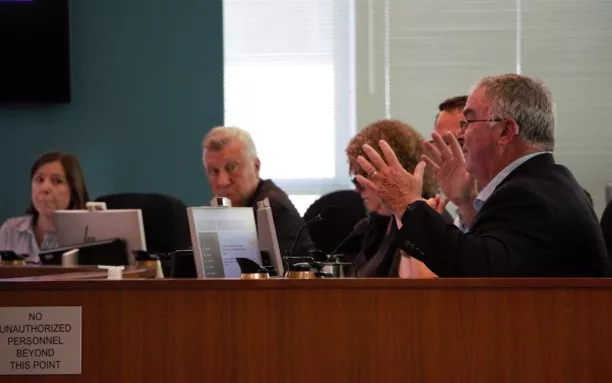
The Springfield City Council engaged in a heated debate Tuesday over grants for Tax Increment Financing (TIF) districts. Frustration mounted as supporters of the ordinances questioned why their fellow council members sought further discussion on this initiative but not others, suggesting that it came down to the demographics of those who would benefit from the money.
TIF districts can be established by cities in areas that have been identified as economically stagnant or unlikely to attract private investment. TIFs are generally intended to revitalize those areas by funding public and private redevelopment projects and attracting private investment.
To establish a TIF, the municipality first assesses the value of the area. Tax revenues generated from the starting value continue to be collected by existing tax bodies. Any surplus increase in tax revenue generated by other improvements to the area is set aside for grants to be reinvested within the same district.
The theory is that if TIF money is used by homeowners or business owners to improve their properties, private investors will be more likely to see the area as stable and profitable, bringing more business to the area. Ward 9 Ald. Jim Donelan provided an example.
“Somebody asked years ago, ‘What do you do if in a TIF district someone builds a new garage?’ That's what you want, because it adds to the tax rolls, adds to the increment, adds to the reinvestment in the area,” Donelan said.
The two proposed TIF grants discussed Tuesday concerned the Far East and Springfield Housing Authority Madison Park Place areas. Those TIFs are set to expire in 2030 and 2034, respectively, according to Ward 2 Ald. Shawn Gregory.
Ward 7 Ald. Brad Carlson and Ward 10 Ald. Ralph Hanauer moved to further debate the ordinances rather than consent to passage.
The conversation around TIFs came shortly after the committee had approved a change to an arterial street to allow for a private development project in Panther Creek subdivision on the west side of the city. Ward 6 Ald. Jennifer Notariano said she supported the TIF ordinances and expressed frustration with what she saw as a discrepancy in treatment.
““We see it every week, we just saw it a few ordinances back (with Panther Creek),” Notariano said. “Private investment is happening in the west. It's not happening on the east side.”
Hanauer took issue with the comparison, which he said was not apples-to-apples.
“There's a big difference between private money and tax money,” Hanauer said. “People are putting their rear ends on the line by doing that, by developing… I don't disagree that we should be developing wherever, but people are going to develop where they want to develop.”
Gregory asked Hanauer for further clarification on his objection to the TIF money going to these specific areas on the east side. Hanauer responded that he had questions on the TIF rules and had not had a chance to research it.
It was the need for further research with which Gregory and Notariano took issue. Gregory referenced a past TIF ordinance which was passed recently.
“You didn't go check the TIF to make sure that it was legal,” Gregory said. “But there is a difference when we go to do things for the different demographics of people. We’ve just seen it.”
Notariano added that the point of the TIF was to encourage more private development.
“That's why we have the TIF, because the private money has fled,” Notariano said. “So if there are individuals who own businesses and own homes in these TIF districts and want a grant to reinvest in their businesses or homes, who are any of us to deny them that?”









